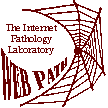|
A 52-year-old man who underwent kidney transplant surgery six years ago comes to your office to complain about a persistent problem with his toenails. His vital signs are normal, but all of the nails on both feet are discolored (yellow to yellowish brown). On closer examination, the nails appear thick, brittle, and hard. Several of them are noticeably distorted, and two of them are loose and partially separated from the nail bed. The infection, if that's what it is, obviously extends under nail and across the nail bed on several toes. On the rest of the toes, it seems to be more superficial. The man says that he has had this problem for over two months and has tried some topical ointments without any success. Aside from the situation with his toes, his health has been quite good, considering his medical history.
Question 6.1: What is your diagnosis?
The symptoms are distinctive and characteristic of onychomycosis, also known as tinea unguium or ringworm of the nails, a persistent disease that is known to affect the toenails and fingernails. Toenail infections are 4-6 times more common than fingernail infections. Onychomycosis cases can be classified into at least five categories, based mostly on their clinical pattern of nail bed involvement: (1) superficial onychomycosis (not affecting the nail bed), (2) distal and lateral subungual onychomycosis (DLSO), (3) proximal subungual onychomycosis, (4) endonyx onychomycosis, and (5) total dystrophic onychomycosis.
Question 6.2: What is the causative agent?
Onychomycosis is a fungal disease. Approximately 80% of all fungal nail infections are caused by Trichophyton rubrum. Other common causative agents include Trichophyton mentagrophytes and Trichophyton interdigitale (both of which, like T. rubrum, are dermatophyte fungi), and the yeast Candida albicans (which causes about 5% of cases). Nondermatophyte fungal species that can cause onychomycosis (albeit rarely) include Scopulariopsis brevicaris and Aspergillus niger.
Question 6.3: How is the diagnosis confirmed?
A KOH preparation of the material from the nails (or from under the nails) should be examined microscopically, to look for the presence of fungal hyphae, which is considered diagnostic. You can also culture the material from the nails on Sabouraud agar, if you want to further confirm the diagnosis or identify the causative agent.
Test Results:
Microscopic examination of the KOH preparations indicates that fungal hyphae are present. The culture grows a filamentous fungus that is subsequently identified as Trichophyton rubrum.
Question 6.4: Who is most likely to get this?
Onychomycosis most often occurs in people who are 40-60 years old. It only rarely occurs prior to puberty. Men are affected more often than women. Onychomycosis appears more frequently in patients with diabetes, peripheral vascular disease, or any condition that results in suppression of the immune system (as in this case). Other predisposing factors include wearing of occlusive footwear, physical exercise followed by communal showering, and incomplete drying of the feet after bathing. Onychomycosis is frequently associated with tinea pedis (athlete's foot).
Question 6.5: What is the differential?
The differential for onychomycosis includes psoriasis, contract dermatitis, lichen planus, subungual keratosis, bacterial infections, trauma, and yellow nail syndrome.
Question 6.6: How do you treat this disease?
Surgical removal of the nail plate is a treatment option, but the relapse rate following this procedure is fairly high. Topical antifungal creams are used for early superficial infections (i.e., those that have not yet spread extensively under the nail). Options include miconazole 2% cream bid, or clortrimazole 1% cream bid. Oral antibiotics are required for more serious cases. The options are detailed in the following table:
| Drug | Toenail infections | Fingernail infections
|
|---|
| Itraconazole | 200 mg qd x 3 mo | 200 mg PO bid x 7 days; followed by 3 wk of no medicine, for two pulses
| | Terbinafine | 250 mg/day for 3 mo | 250 mg/day for 6 wks
| | Fluconazole | 150-300 mg once weekly until infection clears | 150-300 mg once weekly until infection clears
|
All of the oral agents used for onychomycosis require periodic monitoring of liver function with blood tests. It is important to check carefully for interactions with other drugs that patient might be taking. Oral antifungal drug therapy should not be initiated during pregnancy.
Question 6.7: How is this disease prevented?
Prevention of recurrences requires wearing of properly fitted shoes, avoidance of public showers, and keeping feet and nails clean and dry.
Question 6.8: Are there any other considerations for handling cases of this disease?
Podiatry consultation is indicated in diabetic patients, for proper instruction in foot care and footwear, and for nail debridement or surgical removal of the toenail.
| 


